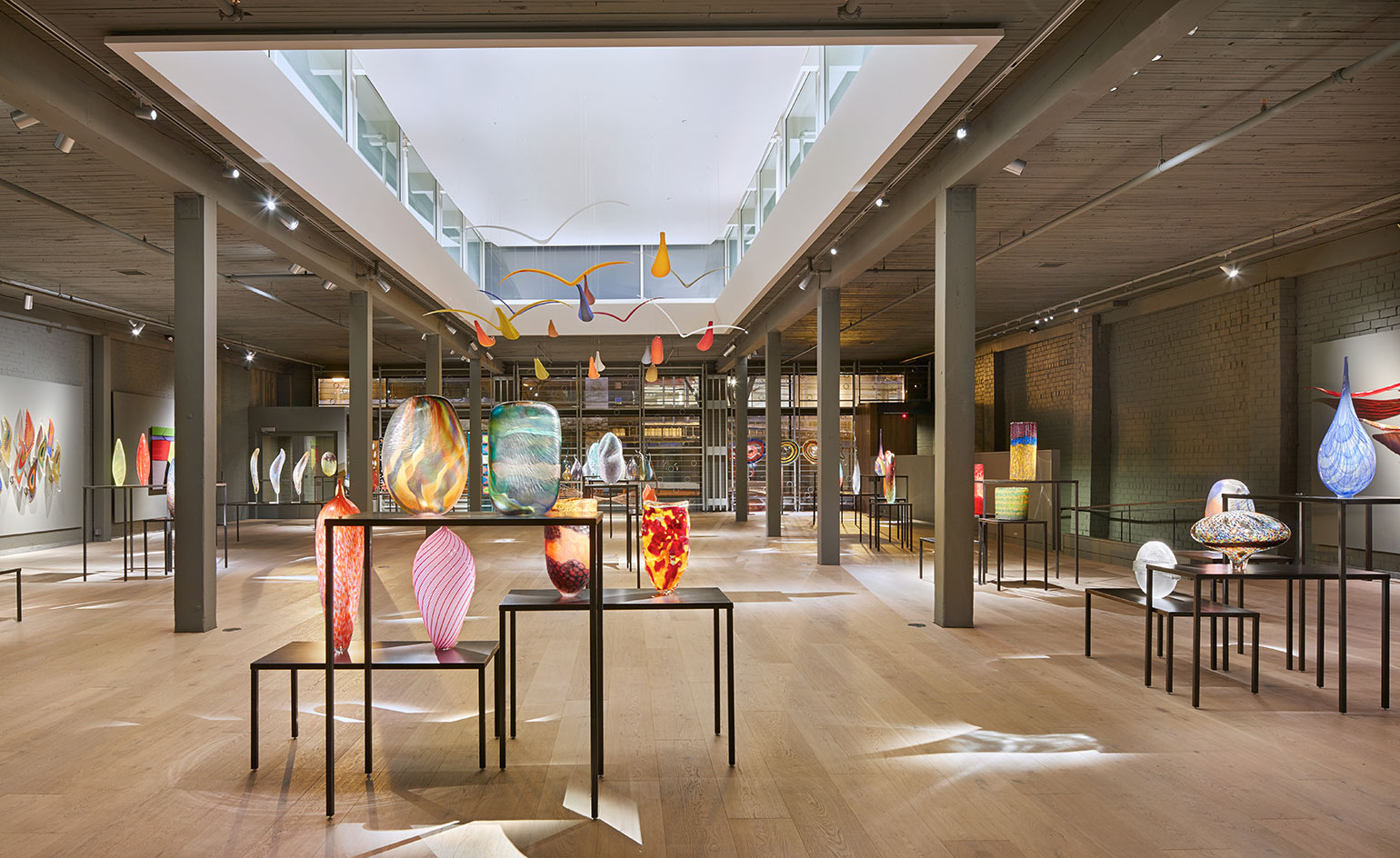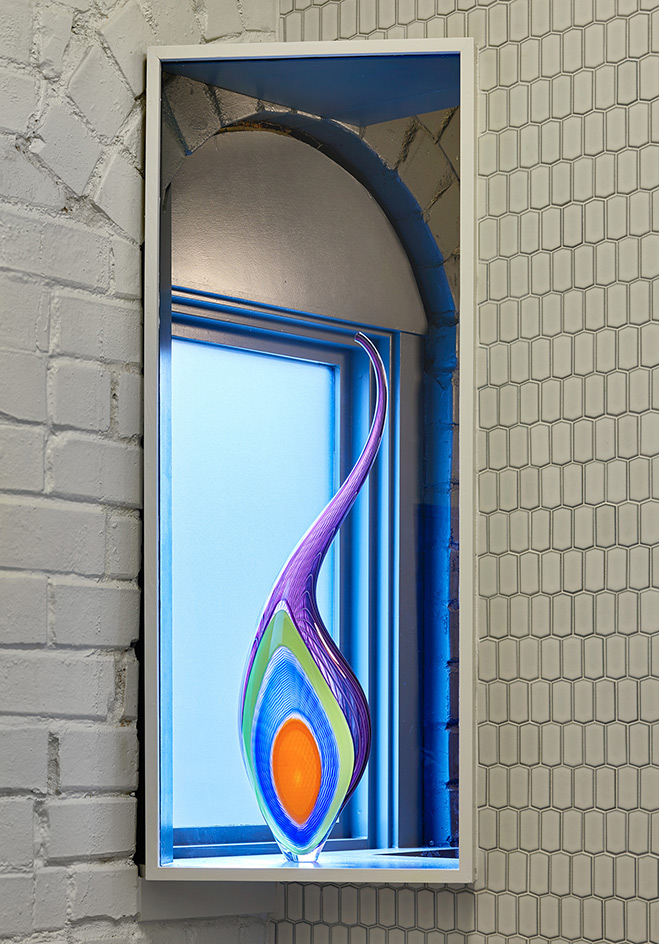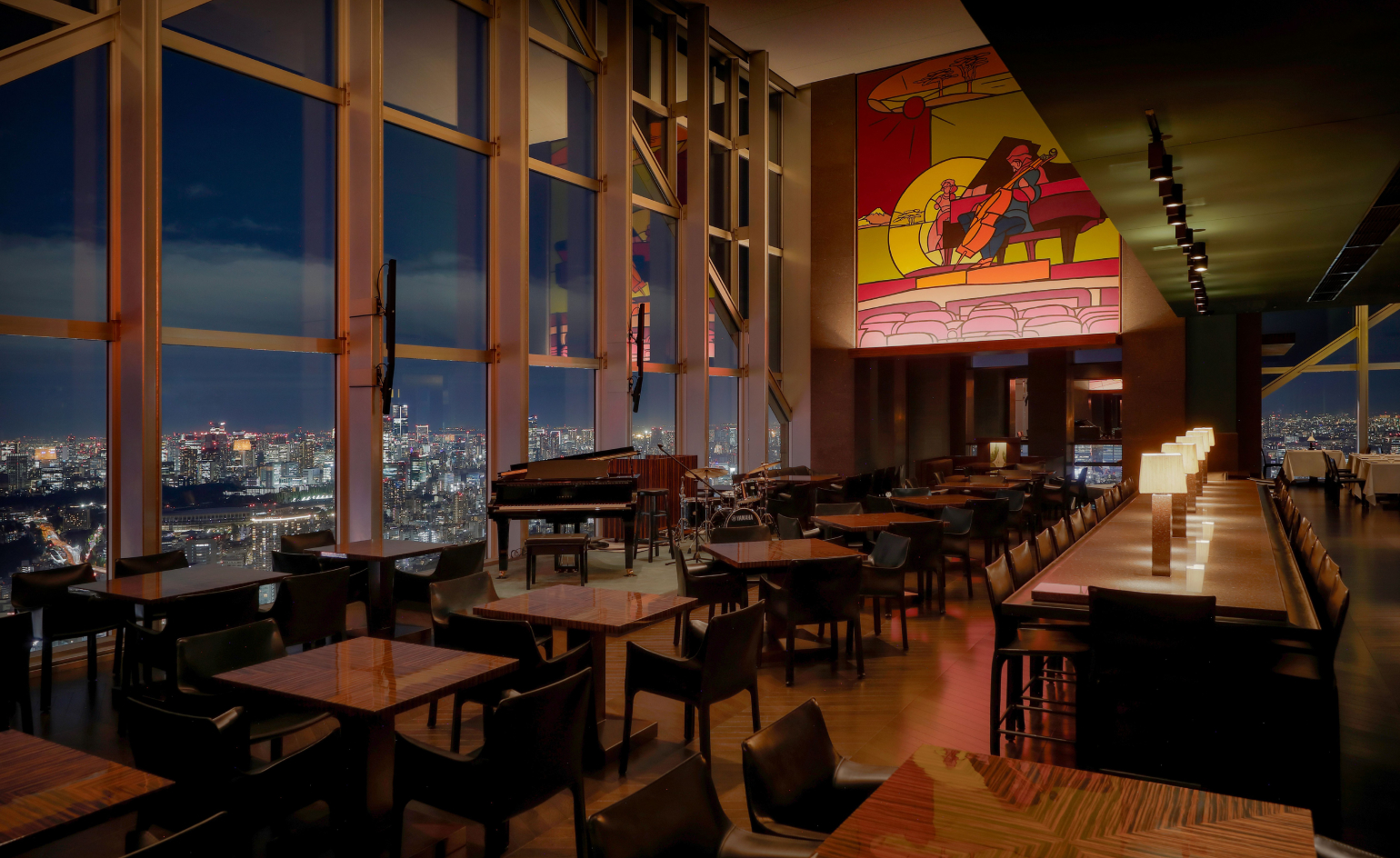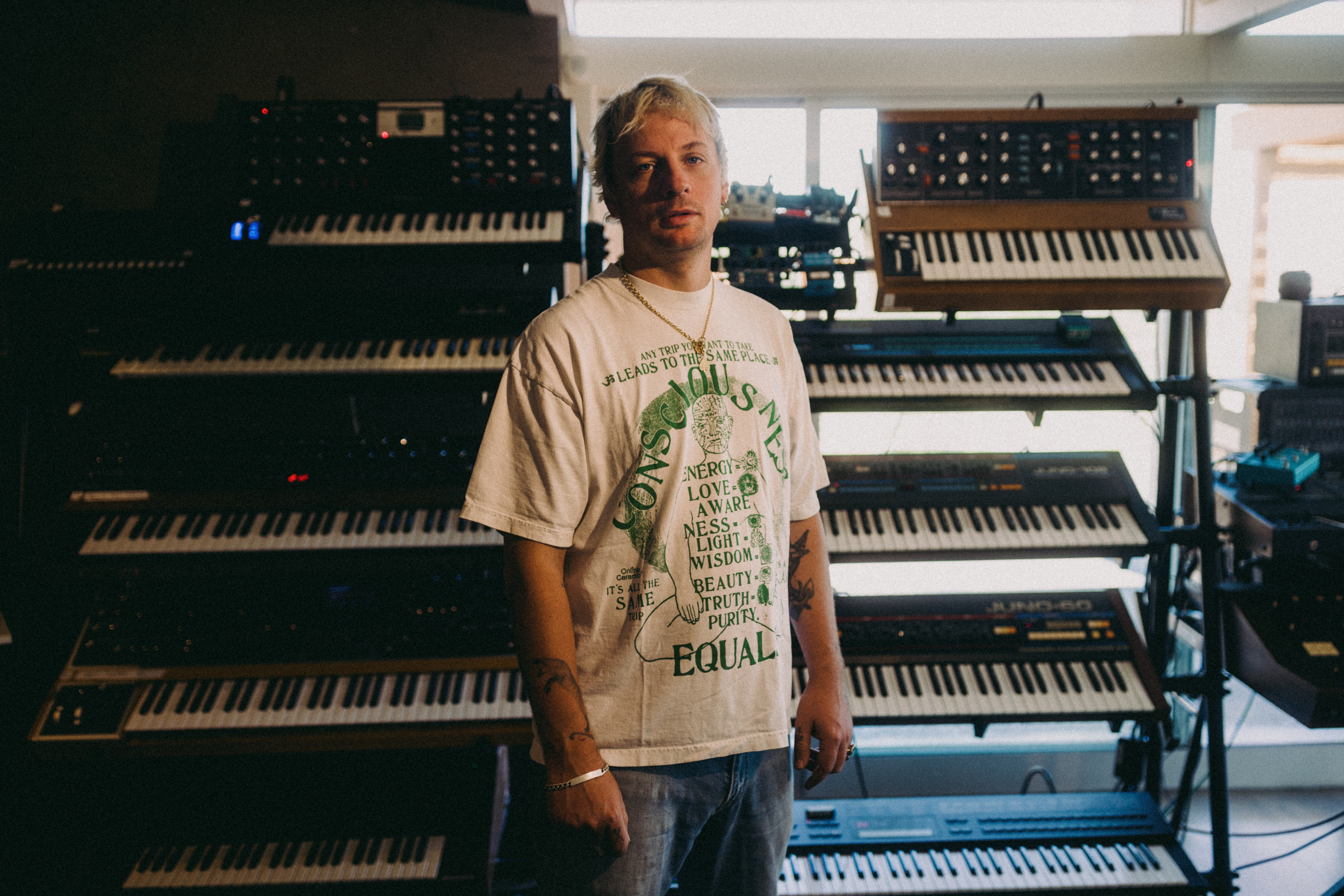Graham Baba Architects designs Seattle gallery for glass artist Lino Tagliapietra

Graham Baba Architects has designed a showroom for Murano-born glass artist Lino Tagliapietra in Seattle. Working with an existing single-storey warehouse building in the downtown neighbourhood of Belltown, the architects created a clean canvas for exhibition, installation, events and business.
The masonry and heavy timber warehouse, originally built in 1917, was previously an auction house, that Graham Baba architects have adapted and upgraded into a ‘space worthy of the art it contains’.
Challenged by Tagliapietra to create a ‘clean, modern, and simple’ backdrop for his textural and colourful glass pieces, the architects painted the exposed brick on the interior a matte grey and re-lay the floors with subtly bleached oak.

A glass piece designed by Murano-born glass artist Lino Tagliapietra on display at the new exhibition space in Seattle.
‘They wanted a dramatic approach to bringing in more daylight while increasing the height and spatial volume to feature custom-hanging installations of Lino’s pieces,’ says Jim Graham, principal-in-charge and Leann Crist, project architect of Graham Baba architects of Tagliapietra and his family’s brief.
The Graham Baba team therefore routed mechanical and electrical systems above the existing roof deck to ensure clean lines and above the space, a designed a curved light monitor to shape the light being brought into the space.
Cutting a hole in the wood laminated roof deck between the major beam lines, allowed light from the glazing in the façade to reach between the roof deck and new panel roof. ‘The structural components are hidden from view by the translucent glass and a subtle curving drywall ceiling,’ say the architects: ‘The effect is an ethereal glow that floats above the space and fills room with daylight. In the evenings, the light monitor is lit from below to provide dramatic indirect light. At all times of day, the hanging glass pieces are the focal point of the space.’
Surrounding the exhibition space are offices and meeting rooms that the architects were careful to always connect to the creative activity of Tagliapietra. ‘We focused all of the support spaces around the exhibition space with very transparent connections to the glass art,’ say the architects. ‘This allows clear sight lines throughout the main floor for both the users and the guests. The activities in the office and the conference room are all about Lino’s art.’

The glass works designed by Lino Tagliapietra take centre stage and the architectural details are kept to a minimum.

The support spaces around the main gallery include a glass-fronted office and conference room, restrooms, kitchenette and storage, round out the functions on the main floor.

A curved light monitor shapes the light being brought into the space.

The entrance to the studio and US headquarters of Lino Tagliapietra.

Custom-designed Europly cabinetry and hot-rolled steel and Europly furniture fit out the spaces. The conference table is built from fir beams reclaimed from the building construction
INFORMATION
For more information, visit the Graham Baba architects website
Receive our daily digest of inspiration, escapism and design stories from around the world direct to your inbox.
Harriet Thorpe is a writer, journalist and editor covering architecture, design and culture, with particular interest in sustainability, 20th-century architecture and community. After studying History of Art at the School of Oriental and African Studies (SOAS) and Journalism at City University in London, she developed her interest in architecture working at Wallpaper* magazine and today contributes to Wallpaper*, The World of Interiors and Icon magazine, amongst other titles. She is author of The Sustainable City (2022, Hoxton Mini Press), a book about sustainable architecture in London, and the Modern Cambridge Map (2023, Blue Crow Media), a map of 20th-century architecture in Cambridge, the city where she grew up.
-
 Robert Therrien's largest-ever museum show in Los Angeles is enduringly appealing
Robert Therrien's largest-ever museum show in Los Angeles is enduringly appealing'This is a Story' at The Broad unites 120 of Robert Therrien's sculptures, paintings and works on paper
-
 The Wallpaper* style team recall their personal style moments of 2025
The Wallpaper* style team recall their personal style moments of 2025In a landmark year for fashion, the Wallpaper* style editors found joy in the new – from Matthieu Blazy’s Chanel debut to a clean slate at Jil Sander
-
 Tokyo’s most cinematic stay reopens as an exercise in architectural self-control
Tokyo’s most cinematic stay reopens as an exercise in architectural self-controlPark Hyatt Tokyo and Studio Jouin Manku demonstrate how design can evolve without erasing memory, balancing modernist heritage with contemporary comfort
-
 Nadia Lee Cohen distils a distant American memory into an unflinching new photo book
Nadia Lee Cohen distils a distant American memory into an unflinching new photo book‘Holy Ohio’ documents the British photographer and filmmaker’s personal journey as she reconnects with distant family and her earliest American memories
-
 Ed Ruscha’s foray into chocolate is sweet, smart and very American
Ed Ruscha’s foray into chocolate is sweet, smart and very AmericanArt and chocolate combine deliciously in ‘Made in California’, a project from the artist with andSons Chocolatiers
-
 Jamel Shabazz’s photographs are a love letter to Prospect Park
Jamel Shabazz’s photographs are a love letter to Prospect ParkIn a new book, ‘Prospect Park: Photographs of a Brooklyn Oasis, 1980 to 2025’, Jamel Shabazz discovers a warmer side of human nature
-
 The Hammer Museum in Los Angeles launches the seventh iteration of its highly anticipated artist biennial
The Hammer Museum in Los Angeles launches the seventh iteration of its highly anticipated artist biennialOne of the gallery's flagship exhibitions, Made in LA showcases the breadth and depth of the city's contemporary art scene
-
 Thomas Prior’s photography captures the uncanny fragility of American life
Thomas Prior’s photography captures the uncanny fragility of American lifeA new book unites two decades of the photographer’s piercing, uneasy work
-
 Central Park’s revitalised Delacorte Theater gears up for a new future
Central Park’s revitalised Delacorte Theater gears up for a new futureEnnead Architects helmed an ambitious renovation process that has given the New York City cultural landmark a vibrant and more accessible future
-
 Stephen Prina borrows from pop, classical and modern music: now MoMA pays tribute to his performance work
Stephen Prina borrows from pop, classical and modern music: now MoMA pays tribute to his performance work‘Stephen Prina: A Lick and a Promise’ recalls the artist, musician, and composer’s performances, and is presented throughout MoMA. Prina tells us more
-
 Curtains up, Kid Harpoon rethinks the sound of Broadway production ‘Art’
Curtains up, Kid Harpoon rethinks the sound of Broadway production ‘Art’He’s crafted hits with Harry Styles and Miley Cyrus; now songwriter and producer Kid Harpoon (aka Tom Hull) tells us about composing the music for the new, all-star Broadway revival of Yasmina Reza’s play ‘Art’